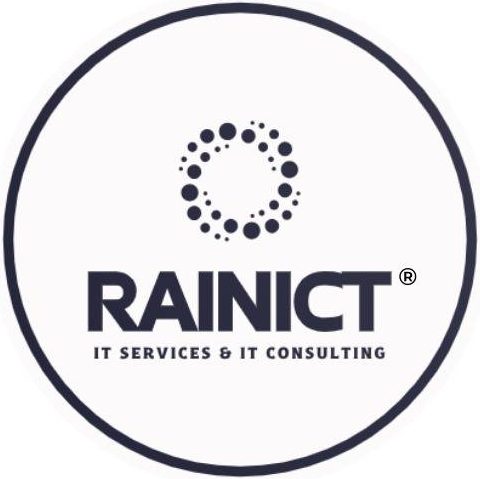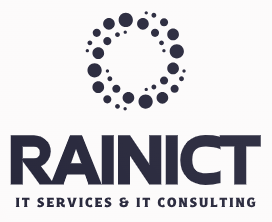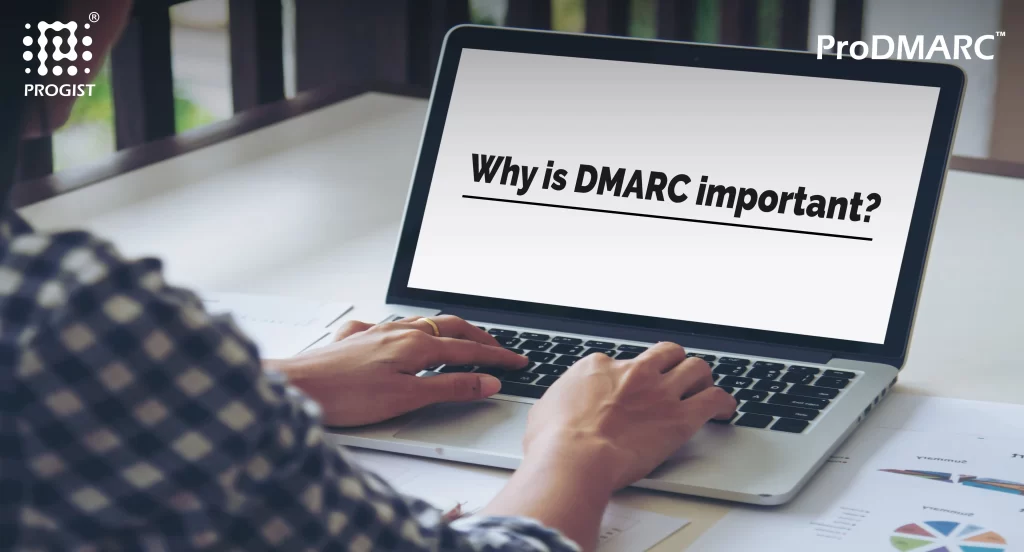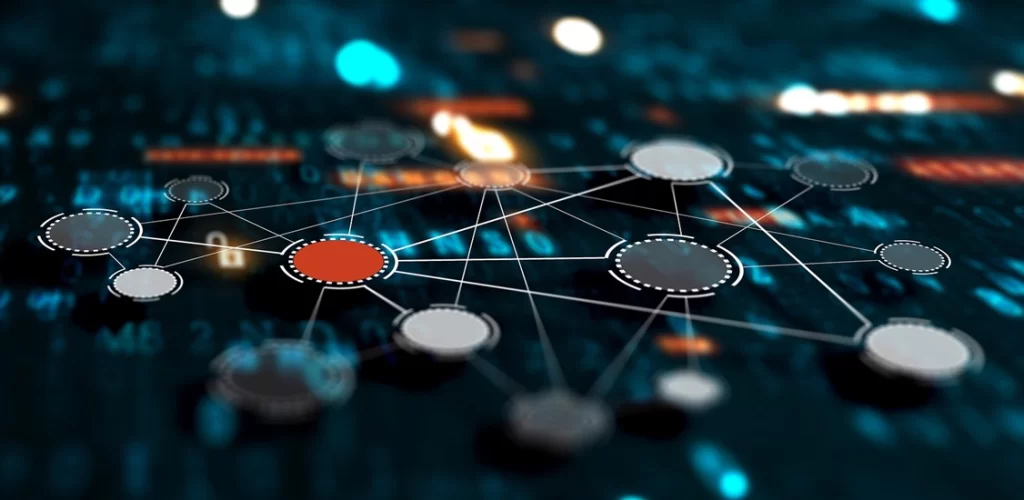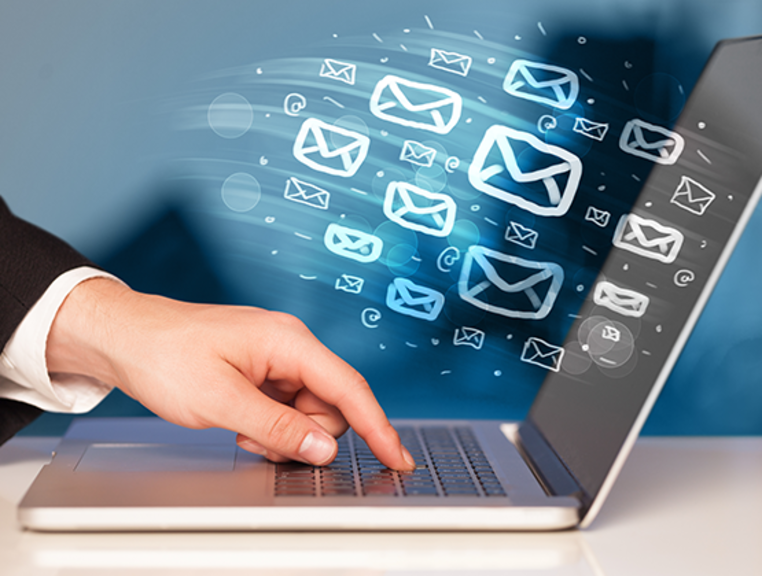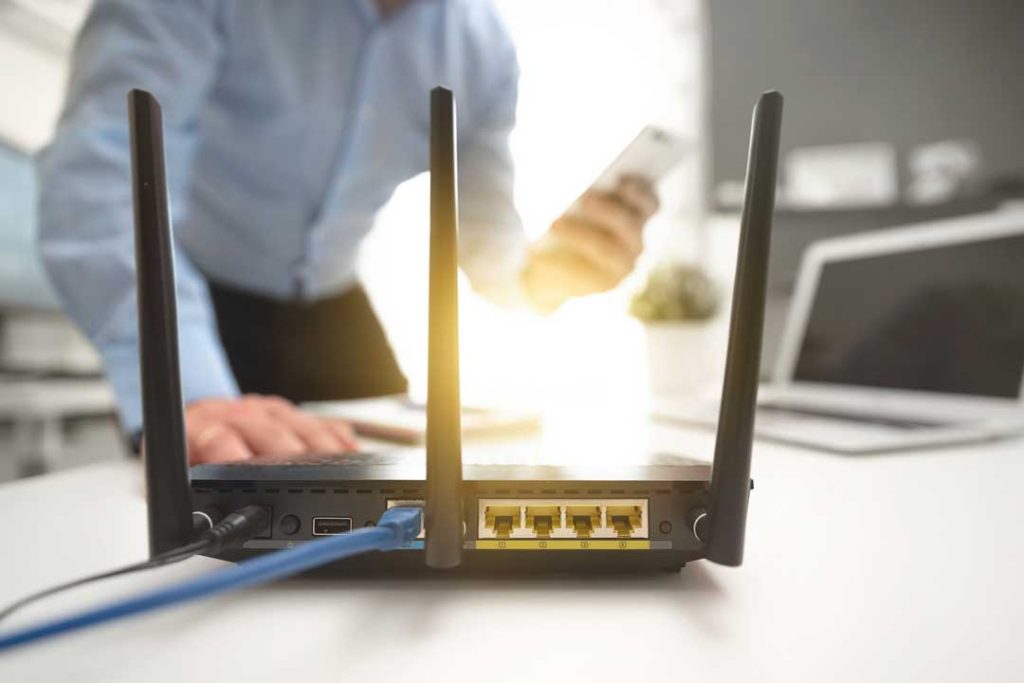The importance of DMARC is evident in sender verification and spoofing protection. If a threat actor sends an email on behalf of your company, DMARC allows you to take authoritative action against it. This helps stop spam and phishing in its tracks. With the cost of cybercrime expected to reach $15 Trillion by 2029, using future-ready solutions like DMARC is the way ahead.
In this blog post, we’ll explain the importance of DMARC authentication and what you can do to implement it correctly for your domain.
DMARC Definition
Domain-based Message Authentication Reporting & Conformance (DMARC) is an email security protocol. DMARC verifies email senders by building on the Domain Name System (DNS), DomainKeys Identified Mail (DKIM), and Sender Policy Framework (SPF) protocols.
The DMARC standard was created to block the threat of domain spoofing, which involves attackers using an organization’s domain to impersonate its employees. It also supplements Simple Mail Transfer Protocol (SMTP), which is the basic protocol used to send email messages, but does not include mechanisms for defining or implementing email authentication.
How does DMARC work?
DMARC requires DKIM or SPF to be in place on an email domain and a DMARC record to be published in the DNS. The DMARC policy process, also known as DMARC alignment and identifier alignment, enables the email domain’s policy to be shared and authenticated after the DKIM and SPF status has been checked.
An SPF DKIM DMARC record requests email servers to send Extensible Markup Language (XML) reports to the email address associated with the record. A DMARC checker report provides information about how email moves through a system and enables users to identify all traffic that uses their email domain.
Why use DMARC for email?
A DMARC record enables domain owners to protect their domains from unauthorized access and usage. This is crucial as email is increasingly vulnerable to cyberattacks, such as phishing, spoofing, whaling, chief executive officer (CEO) fraud, and business email compromise (BEC).
Furthermore, email-based attacks have resulted in people losing trust in email despite it continuing to be one of the most-used communication forms. DKIM and SPF have been used to identify and validate senders for years but did not allow flexibility over what happened if the sender was invalid. This prevented domain owners from taking complete control of their brand, hence the need for DMARC email security.
What Are The Benefits Of DMARC?
DMARC authentication helps domain owners prevent domain spoofing. It is necessary for all United States government agencies and contractors, while other countries have mandated its use by all public bodies and institutions.
The benefits of DMARC include:
Reputation
When a domain owner publishes a DMARC record, it protects their brand by preventing unauthorized users or third parties from sending emails from their domain. The process of publishing a DMARC record can, in some cases, give an organization an immediate boost in reputation.
Security
DMARC provides a consistent policy for email domain owners to handle messages that are not validated or authenticated. As a result, the entire email ecosystem is inherently more secure and trustworthy.
Visibility
A DMARC report increases the visibility of domain owners’ email programs. This ensures they know who is sending email messages from their domain.
What Is A DMARC Record?
A DMARC record is included within an organization or domain owner’s DNS database and is a specific version of DNS text records (TXT records). The full DMARC record looks similar to this: “v=DMARC1\; p=none\; rua=mailto:dmarc-aggregate@mydomain.com\; ruf=mailto:dmarc-afrf@mydomain.com\; pct=100”. These various sections within the DMARC record signify:
- v=DMARC1: The DMARC version specified.
- p=none: The domain owner’s DMARC policy or preferred treatment of any email messages.
- rua=mailto:dmarc-aggregate@mydomain.com: The email address to which aggregate reports need to be sent.
- ruf=mailto:dmarc-afrf@mydomain.com: The email address to which forensic reports need to be sent.
- pct=100: The percentage of email that needs to be subjected to a DMARC policy’s specifications. In this case, 100% of email messages that fail a DMARC test will be rejected by the server.
What Is DMARC domain alignment?
Domain alignment is a DMARC concept that matches the domain of an email against SPF and DKIM. A DMARC record can have varied strictness of DKIM alignment, which affects whether messages will be allowed to pass through the DKIM process. The alignment can either be relaxed, which matches base domains but allows different subdomains, or strict, which precisely matches the whole domain.
Benefits of DMARC
DMARC provides several benefits in reinforcing email-based cybersecurity measures for organizations that implement it. Some of the core advantages of leveraging DMARC include:
- Ensures email deliverability: Setting a DMARC record in your DNS settings is now required for overall email deliverability and preventing threat actors from delivering malicious emails using your domain.
- Lowers the risk of email phishing attacks: DMARC effectively prevents and mitigates the risk of phishing attacks, which can be costly to an organization and its bottom line.
- Enforces sender policies: DMARC allows organizations to enforce policies via its DNS record, defining specific practices for email authentication and providing instructions for receiving mail servers about how to enforce them.
- Protects brand reputation: DMARC helps protect an organization’s brand reputation by preventing cyber criminals from impersonating their domain and deceiving customers and clients into releasing sensitive information.
- Provides thorough authentication reporting: DMARC checks provide visibility into an organization’s email system by offering comprehensive authentication reporting and threat intelligence.
- Functions at scale: DMARC is intended to perform with internet scalability, making it an effective tool for large-scale organizations, institutions, and corporate entities.
- Meets compliance requirements: DMARC implementation helps organizations comply with modern email security standards and industry requirements from major providers like Google and Yahoo.
While many of these benefits overlap, the underlying function of DMARC is to better protect email through effective authentication and threat mitigation.
Why Use DMARC for Email?
DMARC has become a mandatory requirement of an organization’s email security strategy, as it allows recipients of emails using the authenticated domain to trust that messages came from the domain owner and not an impostor. In turn, organizations use DMARC for these core purposes:
- Security: DMARC helps prevent phishing scams from infiltrating an organization’s network, which can compromise its security.
- Visibility: Administrators can monitor emails sent using your domain to ensure they are properly authenticated using SPF and/or DKIM.
- Brand Protection: DMARC can block spoofed messages that might damage your brand’s reputation.
- Deliverability: Major email providers now require DMARC implementation for bulk senders to ensure reliable inbox placement.
- Compliance: DMARC helps organizations meet evolving security standards and regulatory requirements.
DMARC provides a way for domain owners to specify their own authentication practices and determine the actions taken when an email fails to meet authentication criteria. By implementing DMARC-compliant email, organizations can secure their domain(s) from unauthorized use and protect against daily email security threats.
The importance of DMARC is evident in sender verification and spoofing protection. If a threat actor sends an email on behalf of your company, DMARC allows you to take authoritative action against it. This helps stop spam and phishing in its tracks. With the cost of cybercrime expected to reach $15 Trillion by 2029, using future-ready solutions like DMARC is the way ahead.
In this blog post, we’ll explain the importance of DMARC authentication and what you can do to implement it correctly for your domain.
Key Takeaways:
- DMARC is essential for verifying sender authenticity and preventing email spoofing.
- Implementing DMARC enhances brand reputation by protecting domain integrity against unauthorized access.
- Having a DMARC policy in place fosters customer trust in your communication, ensuring legitimate emails are recognized.
- Not adopting DMARC can lead to decreased email deliverability and increased risk of spam complaints.
- Future compliance with DMARC will be mandatory for bulk email senders to maintain effective communication.
What is DMARC and How Does it Work?
DMARC, or Domain-based Message Authentication, Reporting, and Conformance is an email authentication protocol. DMARC, when configured on top of existing SPF and DKIM records, helps you confirm whether an email sent from your domain is genuine or fake.
DMARC helps organizations protect their domains from impersonation and abuse. It allows domain owners to specify actions they wish to take against emails failing SPF and DKIM checks. The DMARC authentication process is explained below:
1. Authentication – DMARC builds on SPF and DKIM to verify if an email is legitimately sent from the domain it claims to be from.
2. Policy Enforcement – The domain owner can set a policy to:
- None (p=none): Monitor and collect data without blocking emails.
- Quarantine (p=quarantine): Mark suspicious emails as spam.
- Reject (p=reject): Block unauthorized emails completely.
![Why is DMARC Important? [2025 Updated] DMARC Policy](https://cdn-caklk.nitrocdn.com/sJCpruYkVvovUsWvtAEzkQwTuXjDDQLL/assets/images/optimized/rev-7bd3022/powerdmarc.com/wp-content/uploads/2021/10/DMARC-Policy.png)
3. Reporting – DMARC provides reports to domain owners, helping them analyze email traffic and detect unauthorized email activity.
The Importance of DMARC in Email Deliverability
From 2024 onwards, without DMARC your emails may get flagged as spam or even rejected by several major email providers! To ensure effective communication and unhindered deliverability, implementing DMARC is crucial.
DMARC Improves Deliverability
Authenticated emails reach inboxes more easily. DMARC ensures your legitimate emails pass through smoothly, improving your chances of being delivered.
DMARC Prevents Domain Impersonation
DMARC at p=reject prevents phishing and spoofing attacks. So recipients are less likely to report or blacklist your domain.
DMARC Maintains Domain Reputation
Enabling DMARC helps maintain your domain reputation, a metric often avidly tracked by internet service and mailbox providers. A positive domain reputation ensures better inbox placement and better deliverability.
DMARC Enhances Email Marketing Effectiveness
If your company frequently sends marketing and promotional emails, you need DMARC. Authenticating your emails ensures better ROI in your email marketing campaigns by increasing email deliverability success rates.
DMARC Ensures Compliance
- Google and Yahoo guidelines have made email authentication mandatory for all senders. Businesses that comply with these guidelines automatically face fewer rejections and delivery issues.
- The PCI SSC mentions DMARC implementation as an example of “good practice” alongside similar anti-phishing controls, for enhanced domain protection. While not a mandate, domain owners can configure the protocol to improve their defenses against email fraud.
The Importance of DMARC for Bulk Senders
Google and Yahoo rolled out their bulk sender requirements in 2024, mandating DMARC for everyone sending more than 5000 emails per day. This especially applies to organizations that send out marketing or promotional emails to their customers daily. The major email service providers are changing their guidelines to incorporate safe sender practices like DMARC to enhance their anti-spam and anti-phishing efforts.
DMARC can be a game-changer when it comes to securing your bulk email campaigns. It makes sure no one can impersonate you to defraud your customers. This makes DMARC a critical weapon against phishing, spoofing, and email fraud and is highly recommended by industry leaders.
It is also important to note that DMARC is no longer optional. High-volume email senders failing to implement DMARC at least at “none” will lead to email deliverability issues, increased email bounce rates, and spam complaints.
How can we improve your email deliverability with DMARC?
To improve email deliverability with DMARC you need to:
- Properly configure SPF, DKIM, and DMARC records.
- Monitor reports to identify and address authentication failures.
- Use a gradual approach when enforcing policies to minimize disruptions.
